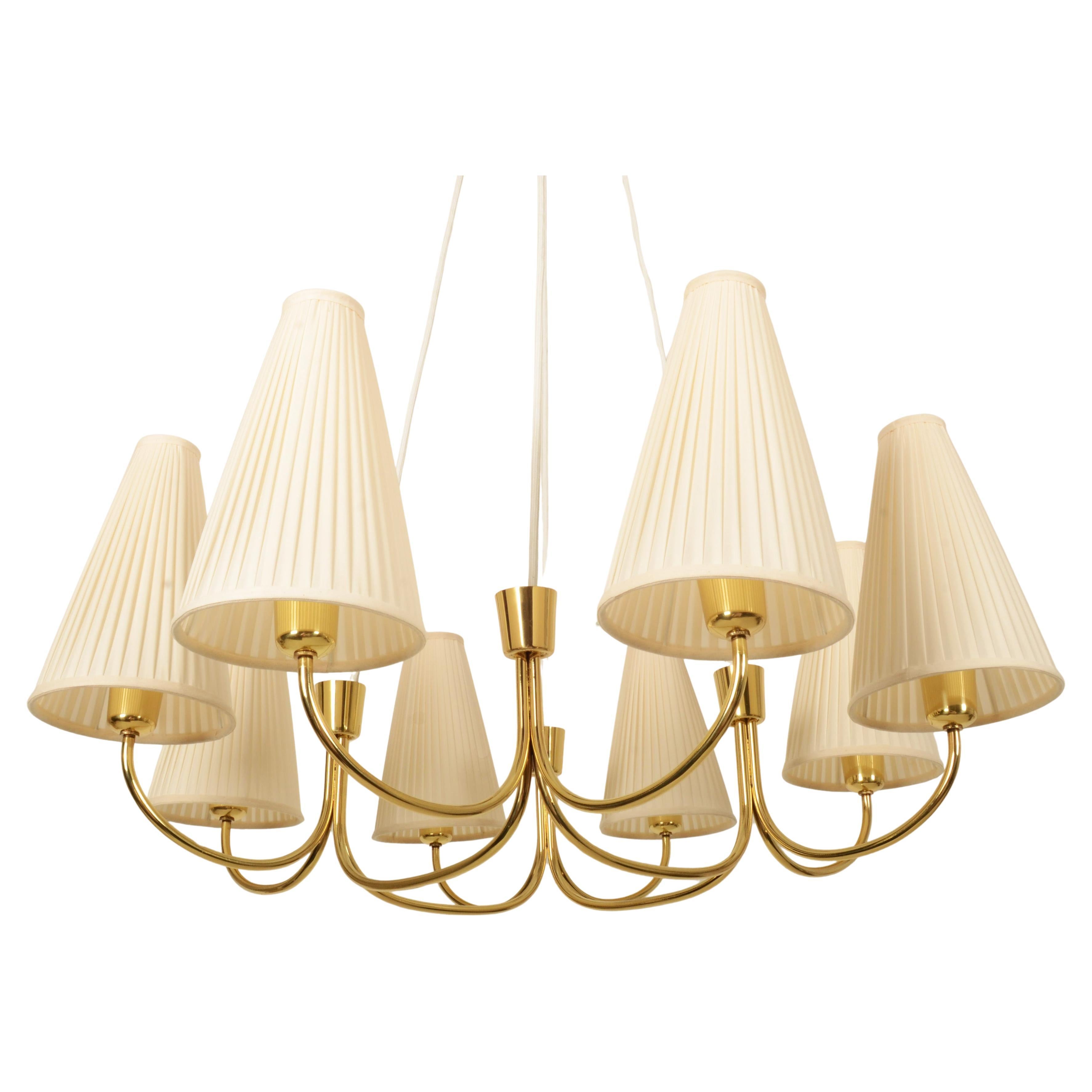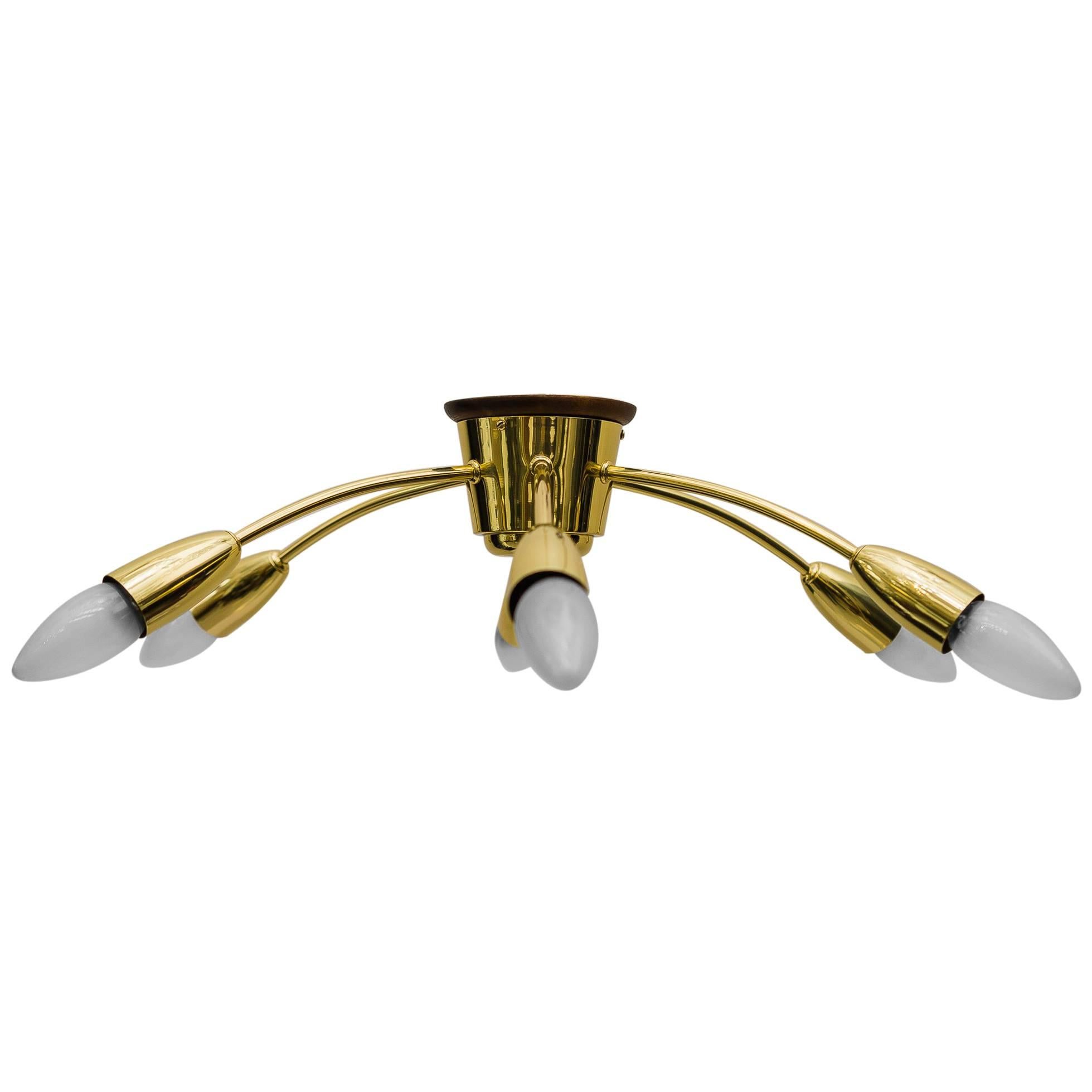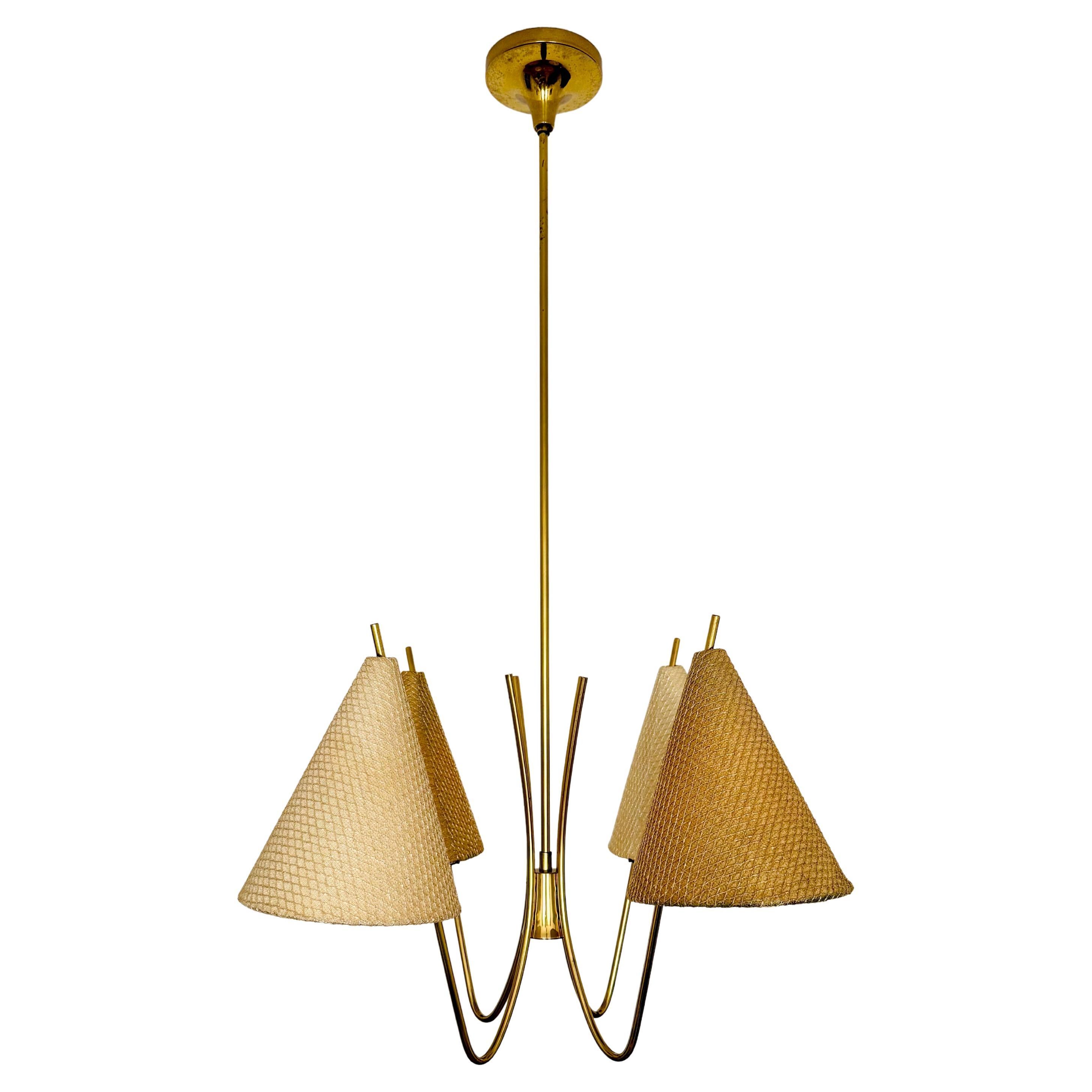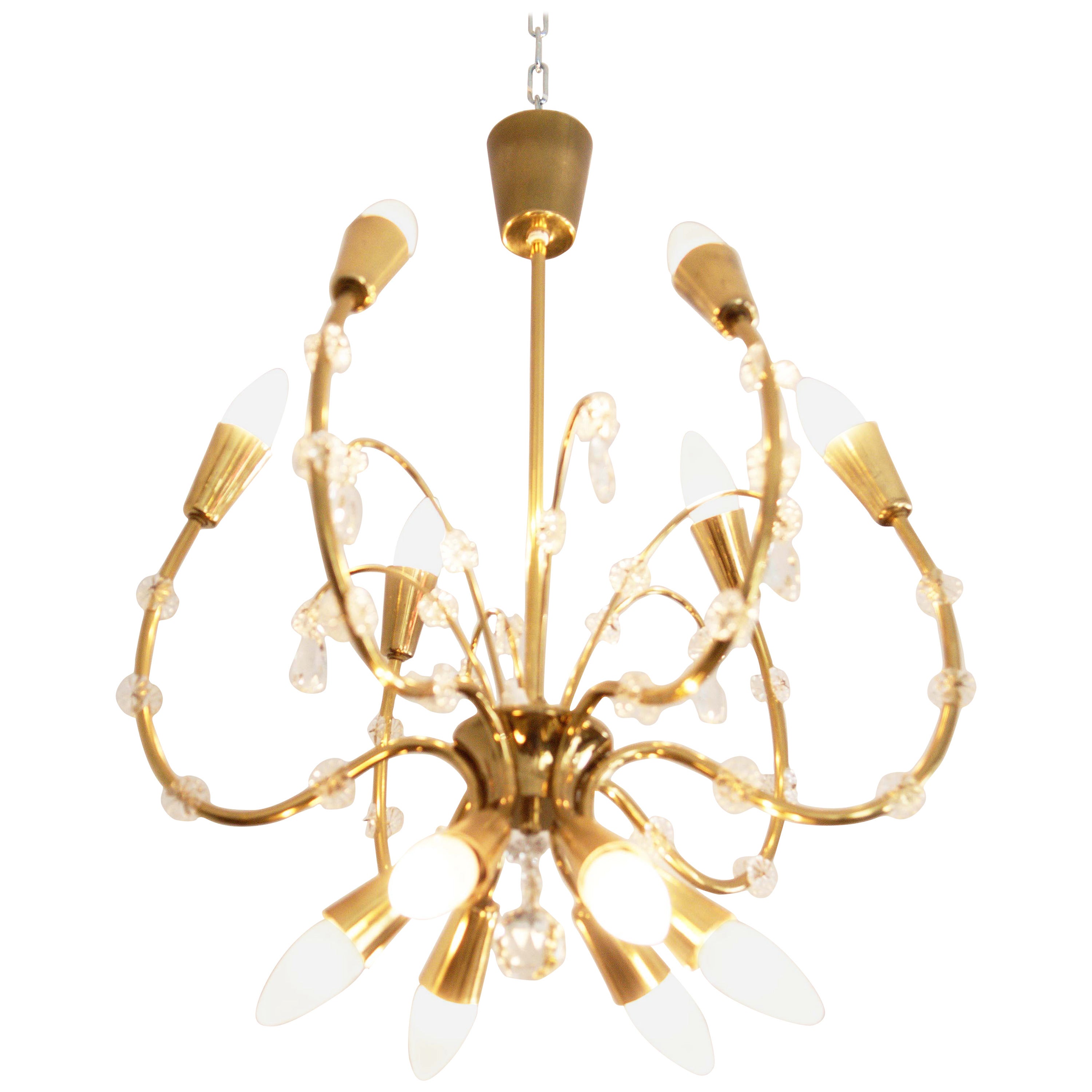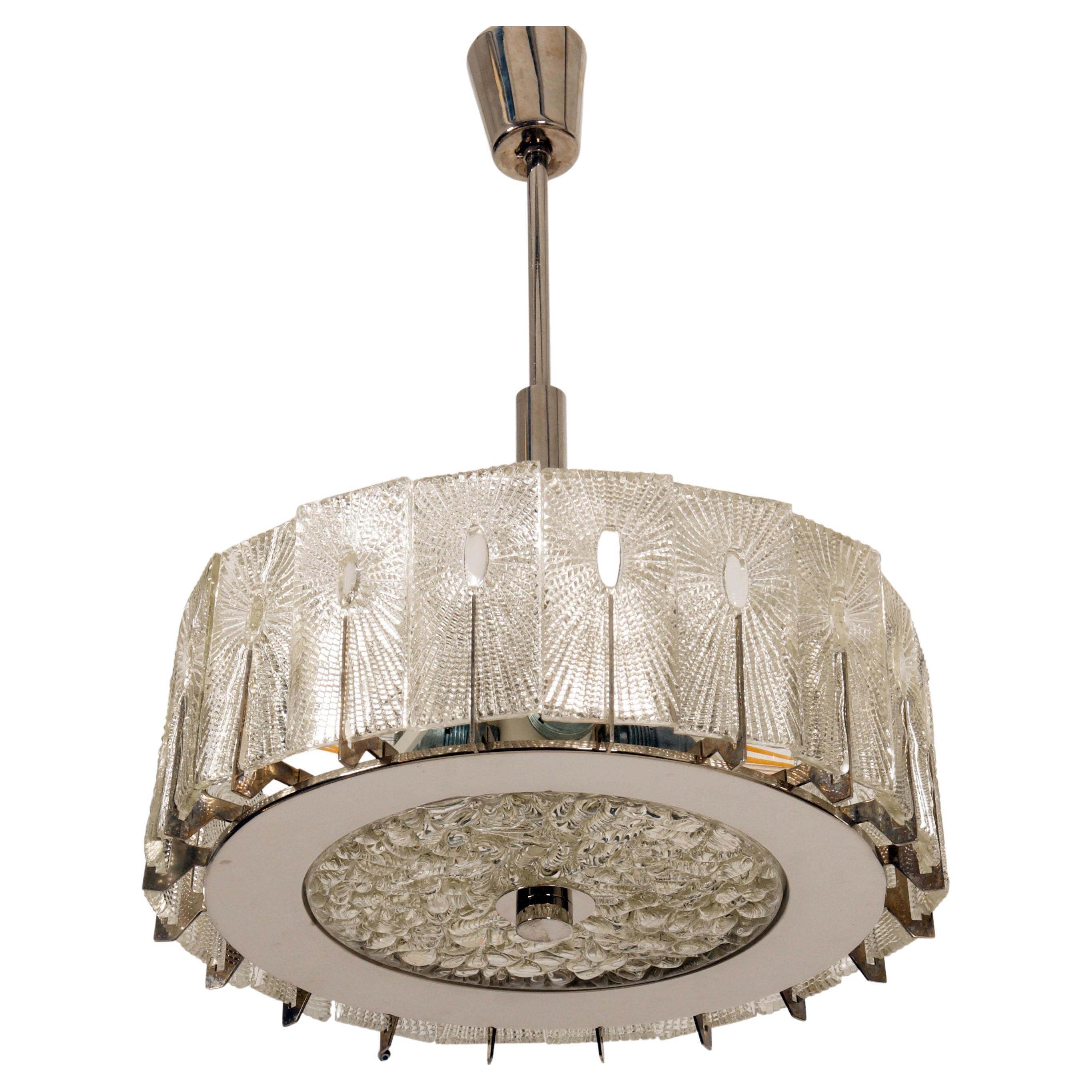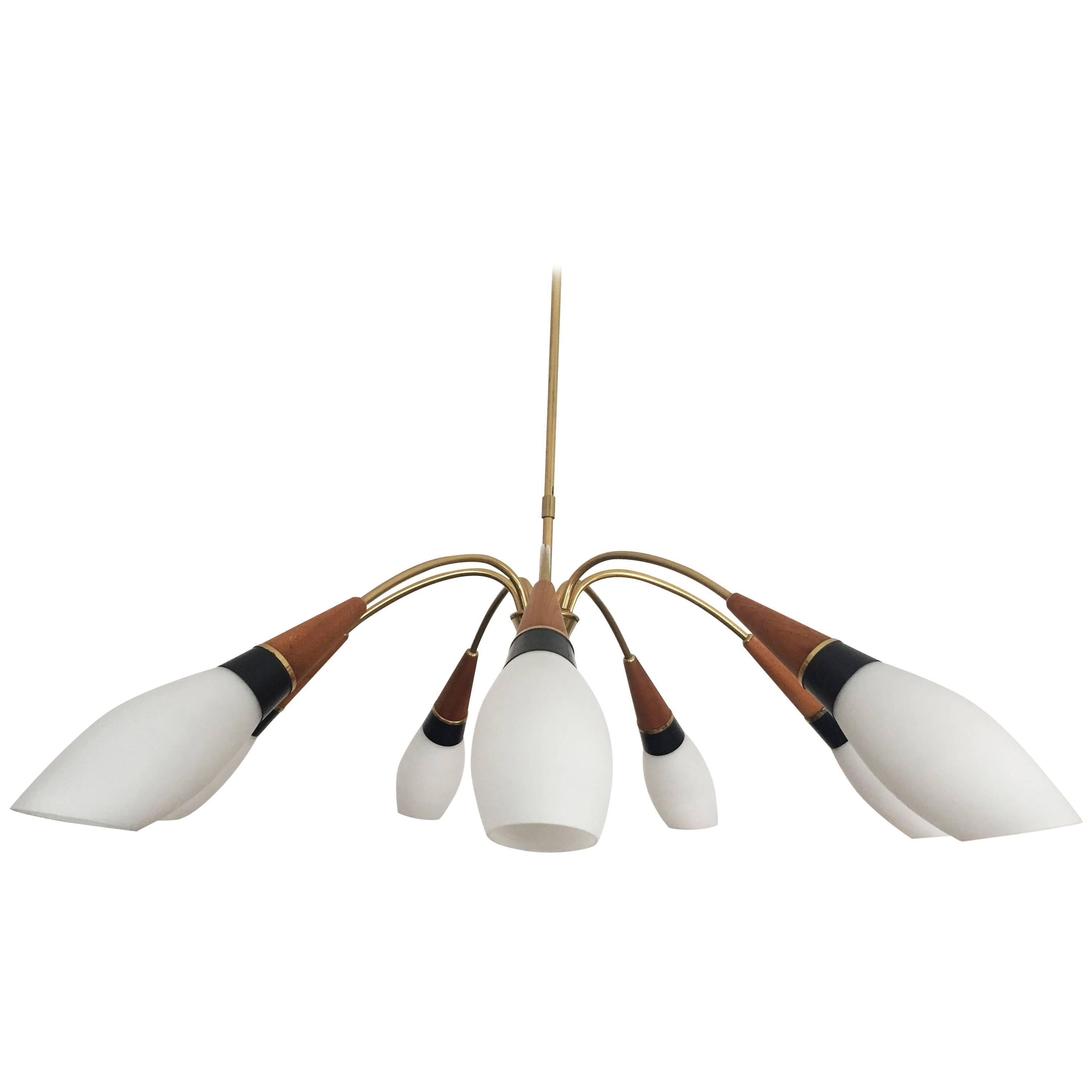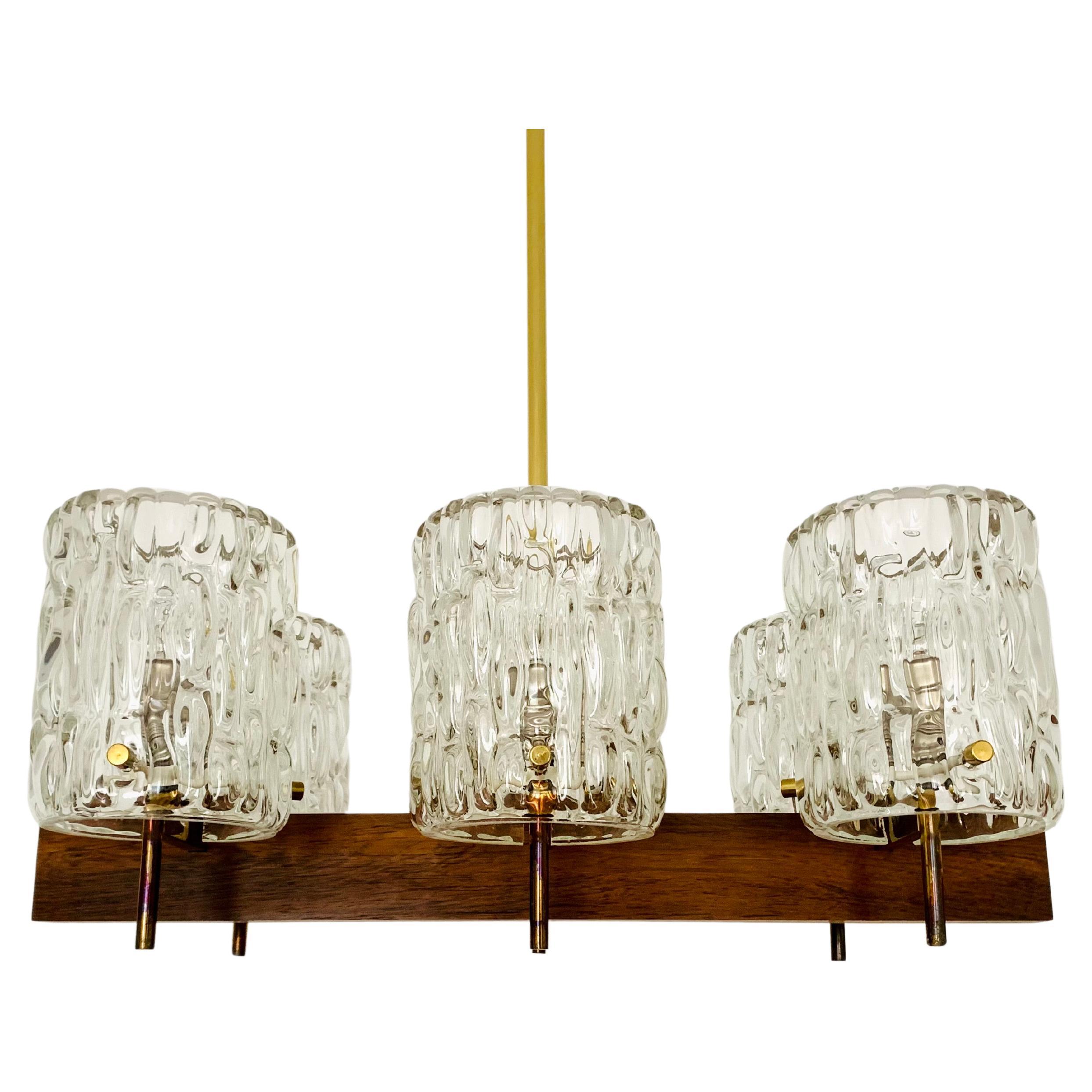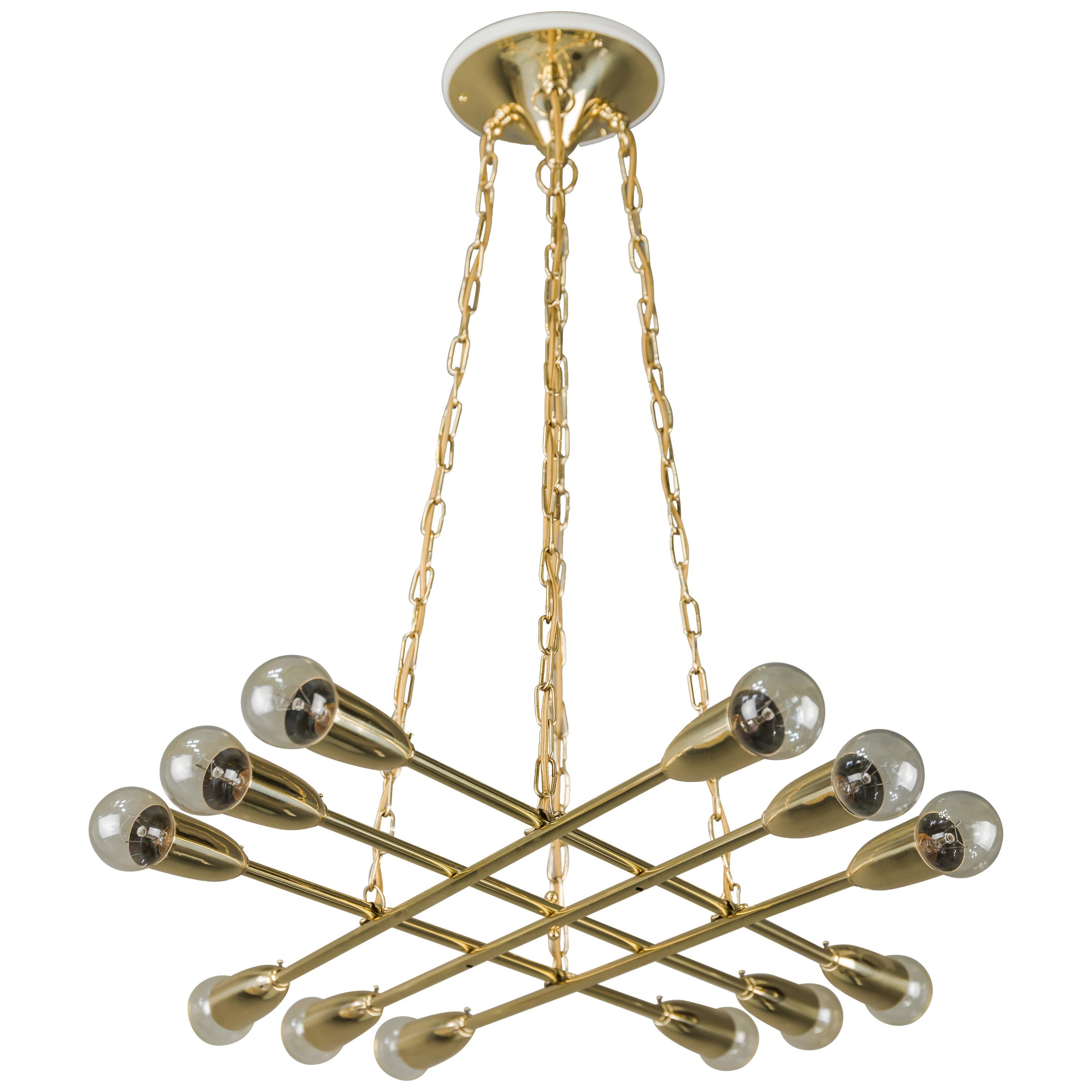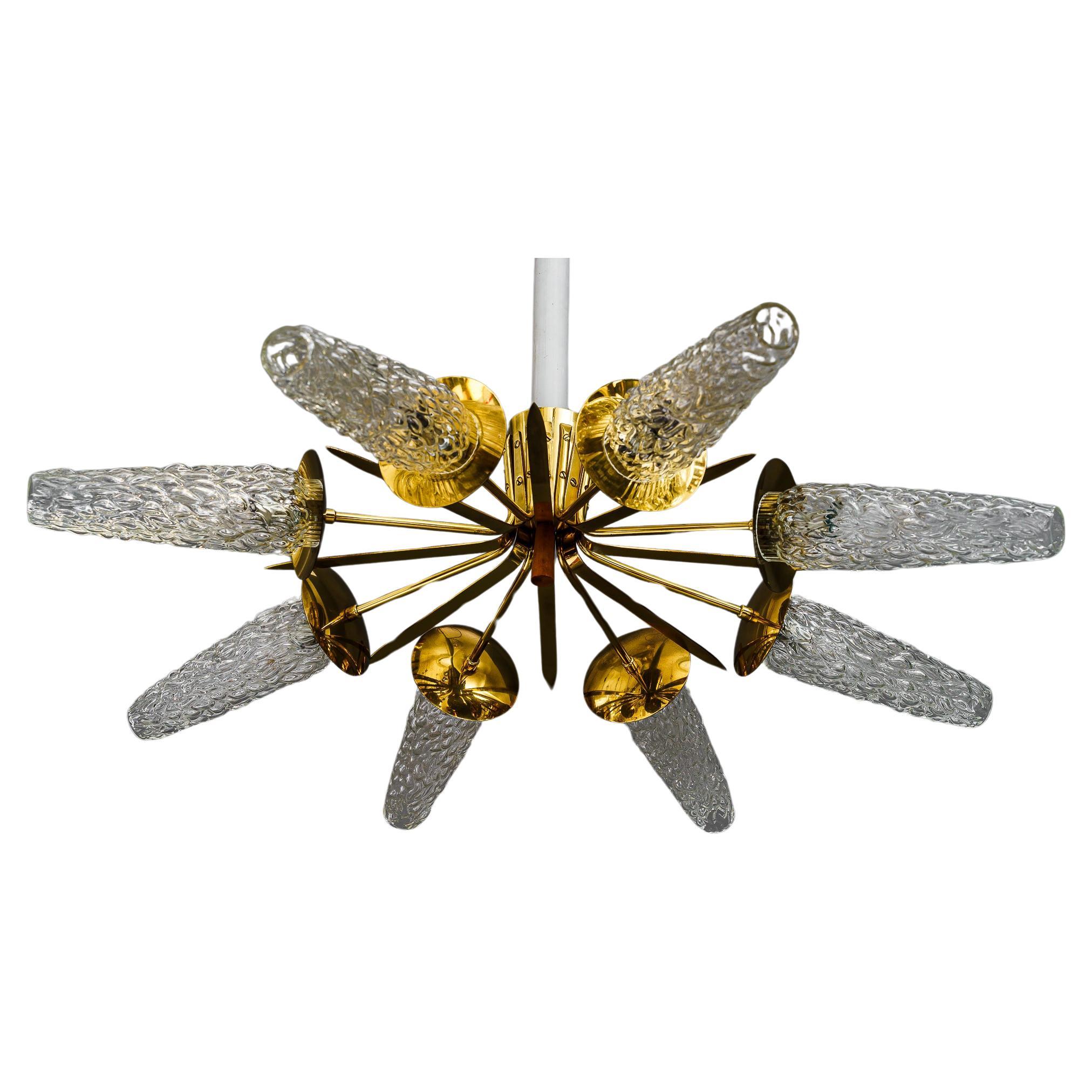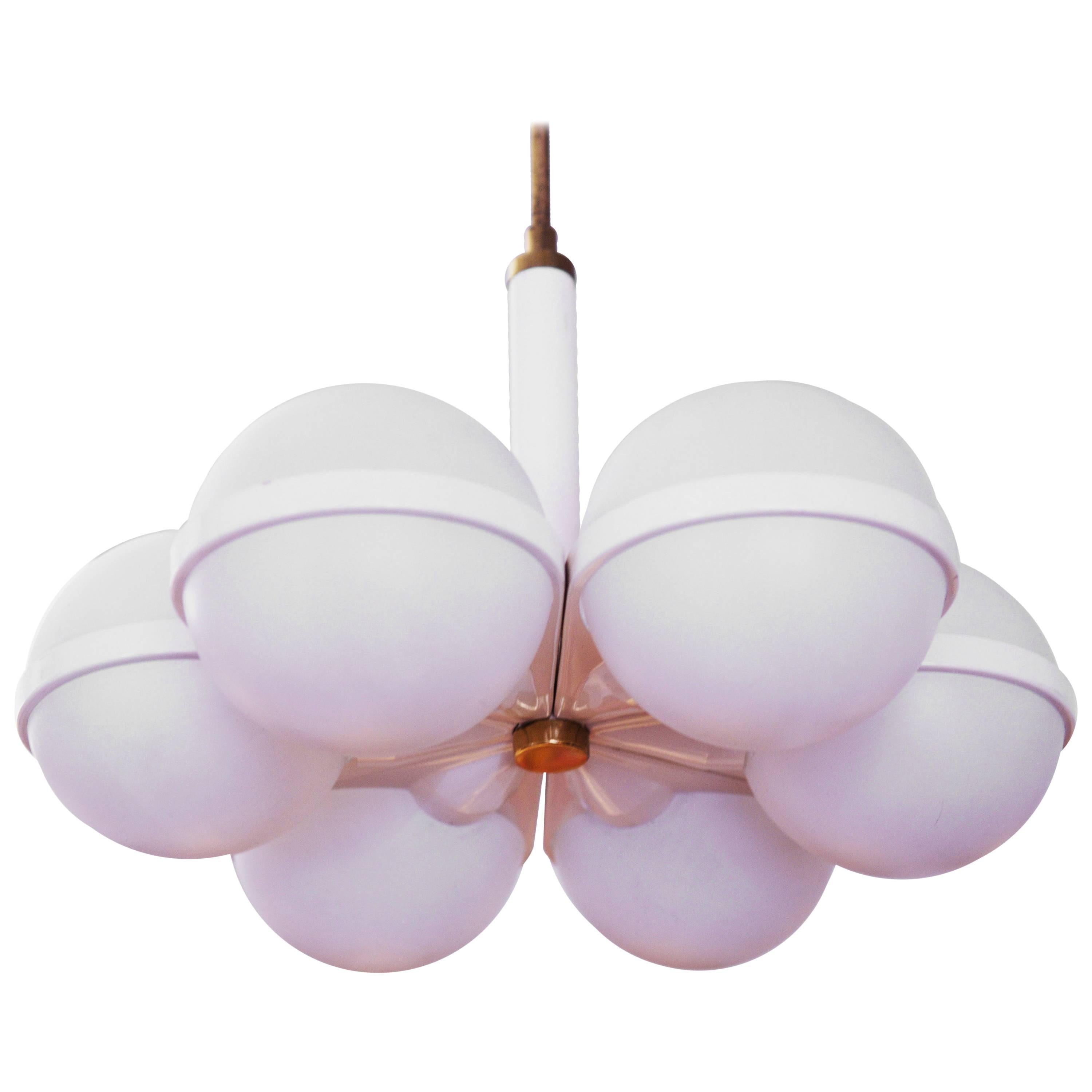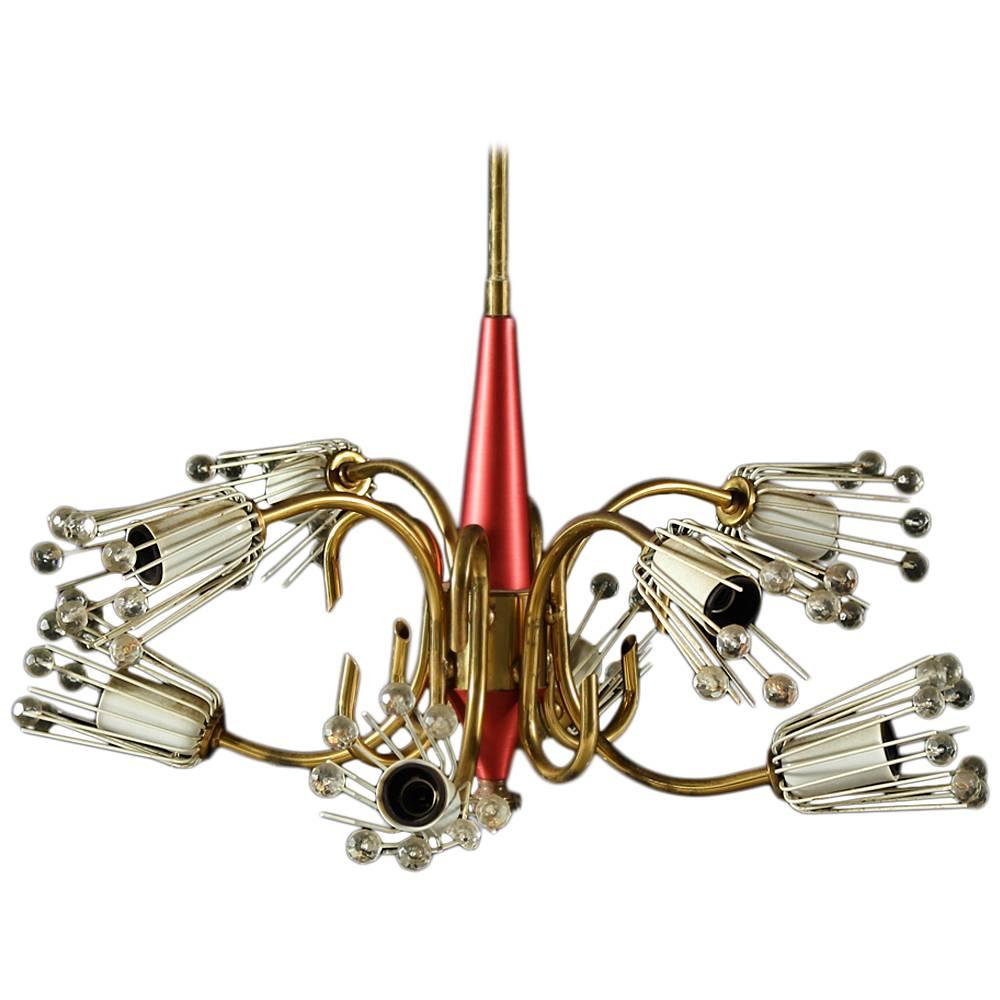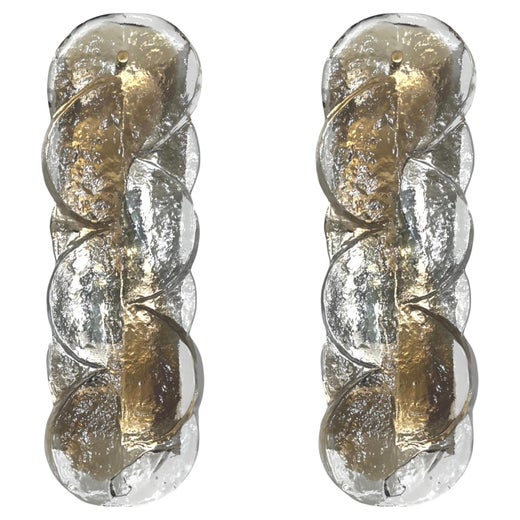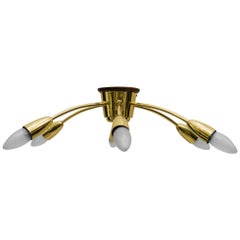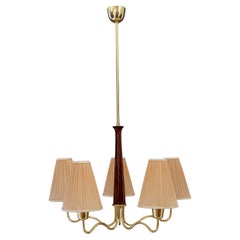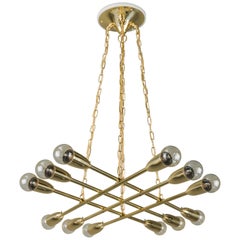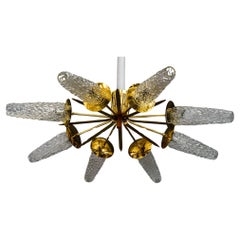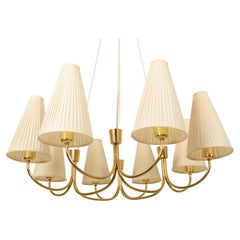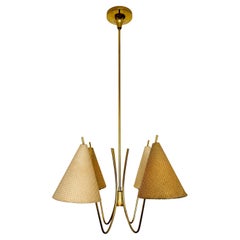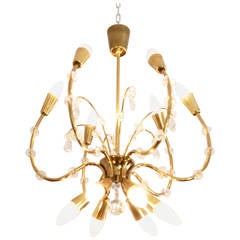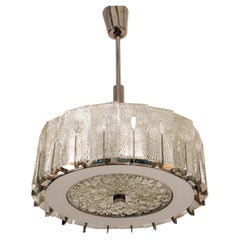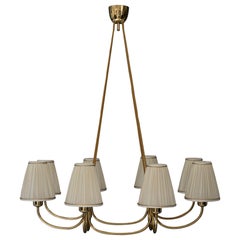
Rupert Nikoll chandelier globus mod. 1069.
View Similar Items
Rupert Nikoll chandelier globus mod. 1069.
About the Item
- Creator:Kalmar Lighting (Manufacturer),Rupert Nikoll (Designer)
- Dimensions:Height: 37.01 in (94 cm)Width: 31.5 in (80 cm)Depth: 31.5 in (80 cm)
- Style:Mid-Century Modern (Of the Period)
- Materials and Techniques:
- Place of Origin:
- Period:
- Date of Manufacture:1960
- Condition:Refinished. Wear consistent with age and use.
- Seller Location:Wien, AT
- Reference Number:1stDibs: LU1071818733642
Rupert Nikoll
The Rupert Nikoll lighting company’s biggest claim to glory came from producing work by the skilled Austrian jeweler and lighting designer Emil Stejnar. He designed several lighting and mirror pieces for the Austrian company. Stejnar had a penchant for symmetrical, rounded forms, often emulating starbursts or floral blossoms in his designs.
Very little information is recorded about the Rupert Nikoll lighting company or its namesake. The company was established in Vienna, Austria, in 1908, and later opened a branch in Munich, Germany. In 1966, its Vienna factory was relocated to Ober-Grafendorf, Austria, about 40 miles away. The company went out of business in 1986, closing the doors of all of its factories.
Decades later, Rupert Nikoll chandeliers and floor lamps still stand the test of time. One of Rupert Nikoll’s most famous designs is the Sputnik pendant lamp, created in the 1960s by Stejnar. With several lighted spokes extending out in every direction, forming a shape similar to a dandelion puff, the Sputnik pendant lamp earned the nickname “Pusteblume,” or “Dandelion” in English. Many imitators have replicated the Sputnik design, but the originals are highly valued by collectors and interior designers. The company is also celebrated for its Sumatra floor lamp, crafted from brass and featuring a curved spine and bipodal base.
On 1stDibs, find vintage Rupert Nikoll lighting, mirrors and more to illuminate your space.
Kalmar Lighting
In 1881, Julius August Kalmar founded Kalmar, a Viennese company that produced handcrafted objects of cast bronze. Kalmar developed a fine reputation and exhibited internationally often, but it was Kalmar’s son, Julius Theodor Kalmar, who took over in 1913 and made the company shine with its modernist lighting.
Having studied at the Birmingham School of Art and Design and under the Austrian architect Josef Hoffmann at the Vienna School of Applied Arts, Julius was deeply inspired by the shift to modernity taking place in Europe and sought to work with the leading architects and designers of his time, including Austrian Werkbund architects Josef Frank and Oskar Wlach as well as Ernst Plischke, Clemens Holzmeister and Oswald Haerdtl. Similar to the Wiener Werkstätte cooperative cofounded by Hoffmann that prized materials, form and function, Kalmar viewed his company’s lighting fixtures as “quite humble things” meant to “fit in and serve their purpose of functionally illuminating spaces without glare.”
In 1925, Kalmar began selling in Haus und Garten, the forward-looking decor shop founded by Frank and Wlach. By 1931, a close partnership with the Austrian Werkbund association of architects, artists and craftsmen allowed the company to realize its vision of early 20th-century modernity — a distinctly Viennese pairing of traditional workmanship with contemporary technology. These collaborations included chandeliers and other fixtures using traditional materials such as glass, bronze and brass while focusing on function over ornamentation. As the company grew, so too did the scope of its projects, and soon Kalmar was installing extravagant chandeliers for the Vienna Opera, the Burgtheater, Vienna stock exchange and other sites.
Under the guidance of Rudolf Calice, Julius Theodor Kalmar’s son-in-law, the 1960s saw Kalmar’s popularity grow, thanks in part to the success of more decorative pieces like the ice-glass fixtures created with Austrian sculptor Karl Gruber. Thomas Calice, the great-grandson of Kalmar’s founder, led the company in the 1990s and its expansion to international lighting projects while shifting away from serial production. In 2009, Thomas’s son August Chalice established Kalmar Werkstätten to produce fixtures that reference the Kalmar archives but also feature updates on the iconic designs. Kalmar continues to produce bespoke fixtures while also working on custom lighting projects around the world, from cruise ships to the Burj Khalifa.
On 1stDibs, find a collection of vintage Kalmar lighting that includes wall lights, floor lamps and other fixtures.
More From This Seller
View AllVintage 1950s Austrian Mid-Century Modern Chandeliers and Pendants
Brass
Vintage 1950s Austrian Mid-Century Modern Chandeliers and Pendants
Brass
Vintage 1950s Austrian Mid-Century Modern Chandeliers and Pendants
Brass
Vintage 1950s Austrian Mid-Century Modern Chandeliers and Pendants
Brass
Vintage 1950s Austrian Mid-Century Modern Chandeliers and Pendants
Brass
Vintage 1950s Austrian Mid-Century Modern Chandeliers and Pendants
Brass
You May Also Like
Vintage 1950s Austrian Mid-Century Modern Chandeliers and Pendants
Brass
Vintage 1950s Austrian Mid-Century Modern Chandeliers and Pendants
Metal
Mid-20th Century Austrian Mid-Century Modern Chandeliers and Pendants
Brass
Vintage 1960s Austrian Mid-Century Modern Chandeliers and Pendants
Brass, Chrome
Vintage 1960s Austrian Mid-Century Modern Chandeliers and Pendants
Brass
Vintage 1950s German Mid-Century Modern Chandeliers and Pendants
Brass
